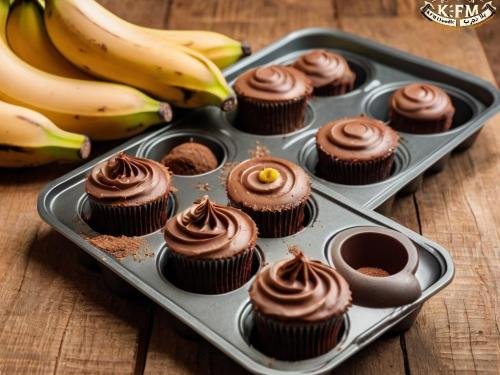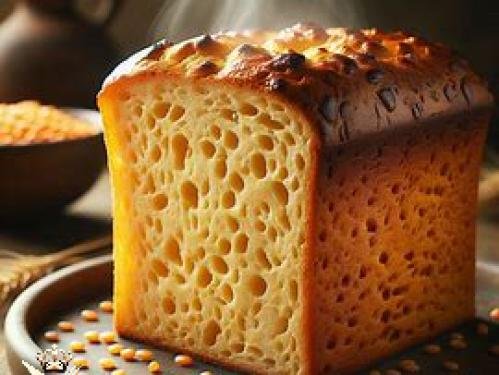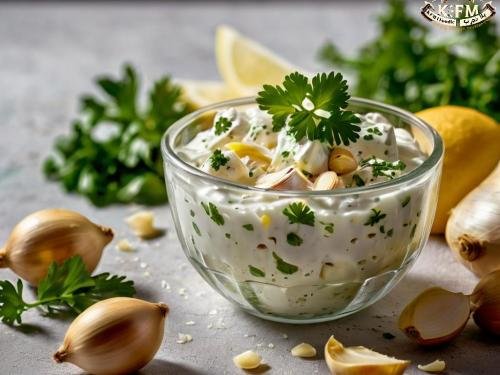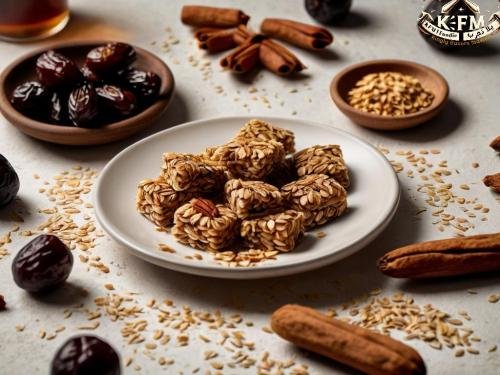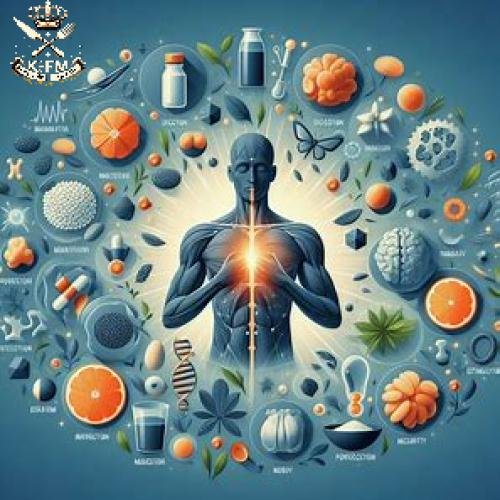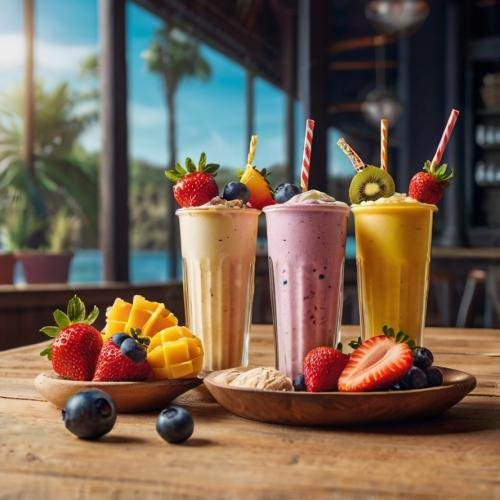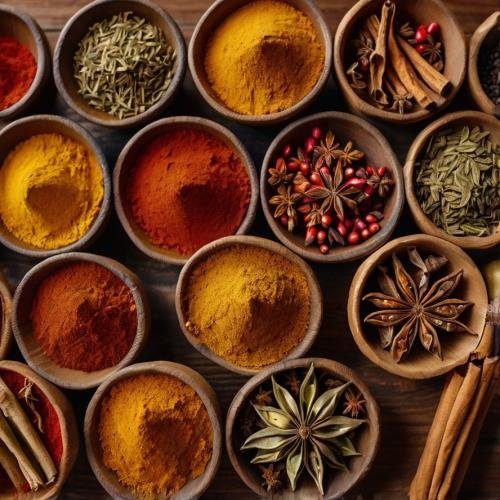Are you looking for the secret to radiant skin, strong muscles, and a healthy heart? The answer lies in a delicious plate of salmon! This oily fish, rich in Omega-3, is not just a tasty meal but a treasure trove of nutrients that nourish your body inside and out. In this comprehensive guide, we will reveal the secrets of selecting and storing salmon to maintain its nutritional value, along with various recipes to prepare delicious and nutritious meals.
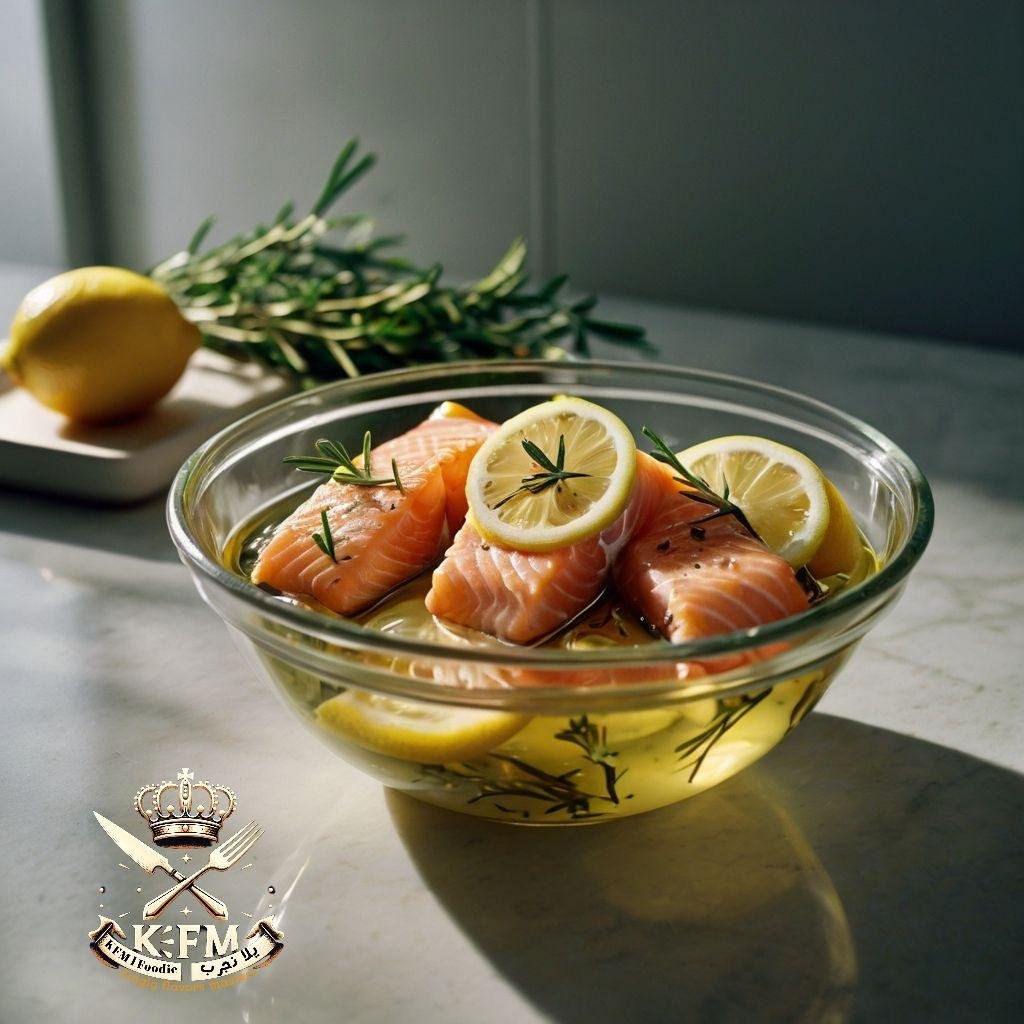
Types of Salmon
1. The Difference Between Wild and Farmed Salmon
- Wild Salmon: Lives in its natural habitat, such as oceans and rivers, and feeds on natural marine organisms, making it richer in Omega-3 fatty acids.
- Farmed Salmon: Raised in aquaculture farms and fed processed feeds, which may affect its nutritional composition and fat content.
2. Which Is Better in Terms of Health Benefits and Taste?
- Health Benefits: Wild salmon contains less fat and more Omega-3, making it the healthier choice. However, farmed salmon is still a good option.
- Taste: Wild salmon has a more intense flavor and firmer texture, while farmed salmon is fattier and softer.
How to Choose Fresh Salmon When Buying
1. Quality Indicators
When buying salmon, make sure to check:
- Color of the flesh: It should be bright orange without dark spots.
- Smell: A fresh sea-like scent, not strong or unpleasant.
- Texture: The flesh should be firm to the touch, not soft or sticky.
- Eyes and gills: The eyes should be clear and shiny, and the gills should be bright pink or red.
2. Difference Between Fresh and Frozen Salmon
- Fresh Salmon: Best in terms of flavor and texture but should be consumed quickly.
- Frozen Salmon: Can be just as good as fresh if frozen properly, making it a great choice for long-term storage.
Proper Salmon Storage Methods
1. Refrigeration
Method:
- Wash the salmon and pat it dry with paper towels.
- Wrap it tightly using plastic wrap or place it in an airtight container.
- Store the salmon in the coldest part of the refrigerator, away from the door.
Duration:
- Fresh salmon can be kept in the refrigerator for 2-3 days.
- Packaged salmon may last slightly longer, but always check the expiration date.
2. Freezing
Method:
- Wash the salmon and dry it thoroughly.
- Cut it into portion-sized pieces.
- Wrap each piece in plastic wrap or cling film, then place them in airtight freezer bags.
- Use double wrapping (placing the bags in an airtight container) for extra protection.
- Remove air from the bags before sealing to prevent ice crystal formation.
Duration:
- Frozen salmon can be stored for up to 6 months.
3. Storing in Oil
Method:
- Slice the salmon into thin strips.
- Place the strips in a clean glass jar.
- Fill the jar with olive oil until the salmon is completely submerged.
- Seal the jar tightly and store it in the refrigerator.
Duration:
- Salmon stored in oil can last up to two weeks.
Additional Tips
1. How to Cook Salmon After Storage
- If Refrigerated: Remove from the fridge and let it sit at room temperature for 10-15 minutes before cooking.
- If Frozen:
- Best method: Thaw slowly in the refrigerator for 12-24 hours.
- Quick method: Place in a sealed bag under cold running water for 30-60 minutes.
- Avoid microwave defrosting: It can alter the texture and start cooking the fish partially.
2. Signs of Spoiled Salmon
It is crucial to know when salmon is no longer safe to eat:
- Strong, unpleasant odor resembling ammonia or rotten fish.
- Sticky or overly slimy texture.
- Unusual discoloration, such as dark spots or a shift to gray or green hues.
- Dark or very pale gills if the fish is whole.
3. Cooking Methods and Their Impact on Nutritional Value
- Grilling or Baking: Preserves most nutrients and reduces excess fat.
- Boiling or Steaming: The best method for retaining Omega-3.
- Deep-Frying: Adds unhealthy fats and may reduce nutritional benefits.
4. Best Salmon Types in Terms of Quality
If you're looking for the best quality, here are some well-known salmon varieties:
- King Salmon: The most expensive and richest in Omega-3.
- Sockeye Salmon: Has a bright red color and a rich flavor.
- Coho Salmon: A balanced choice in terms of flavor and fat content.
- Atlantic Salmon: Often farmed but widely available and reasonably priced.
Health Benefits of Salmon
Salmon is one of the most nutrient-rich foods, packed with Omega-3 fatty acids, high-quality proteins, essential vitamins, and minerals. Here are the key health benefits of salmon:
Heart and Cardiovascular Health
- Reduces bad cholesterol (LDL) and increases good cholesterol (HDL), helping lower the risk of atherosclerosis.
- Lowers triglyceride levels in the blood, reducing the likelihood of coronary heart disease.
- Regulates blood pressure due to the anti-inflammatory effects of Omega-3, helping prevent heart attacks and strokes.
- Improves blood vessel function by reducing inflammation and increasing arterial flexibility.
Brain and Memory Health
- Enhances cognition and memory thanks to its Omega-3 content, which supports neural communication.
- Reduces the risk of Alzheimer's and dementia, as essential fatty acids help protect the brain from cognitive decline.
- Decreases symptoms of depression and anxiety, as Omega-3 plays a role in improving mood and mental well-being.
Eye Health
- Prevents age-related macular degeneration (AMD), a leading cause of vision loss in older adults.
- Protects against dry eyes, as Omega-3 helps maintain hydration and reduces irritation.
- Lowers the risk of cataracts (clouding of the eye lens) due to antioxidants like astaxanthin found in salmon.
Strengthening the Immune System
- Boosts immune response due to its selenium and zinc content, helping the body fight viral and bacterial infections.
- Reduces chronic inflammation, which can lead to diseases such as arthritis and autoimmune disorders.
- Stimulates the production of immune cells thanks to its high protein and vitamin D content.
Bone and Joint Health
- Reduces the risk of osteoporosis due to its vitamin D and calcium content, which enhance bone mineral absorption.
- Improves joint health by reducing inflammation that causes joint pain, especially in individuals with rheumatoid arthritis.
- Promotes collagen production, essential for maintaining strong bones and cartilage.
Improved Skin and Hair Health
- Enhances skin elasticity and reduces wrinkles, thanks to Omega-3, which keeps skin hydrated and prevents oxidative damage.
- Reduces acne and skin inflammation due to the anti-inflammatory properties of fatty acids.
- Strengthens hair follicles and reduces hair loss with its rich supply of vitamins and minerals.
Weight Loss and Metabolism Boost
- Stimulates metabolism and increases fat burning due to its high-protein and healthy fat content.
- Increases satiety, which reduces calorie intake and helps in weight management.
- Improves insulin sensitivity, helping lower the risk of type 2 diabetes.
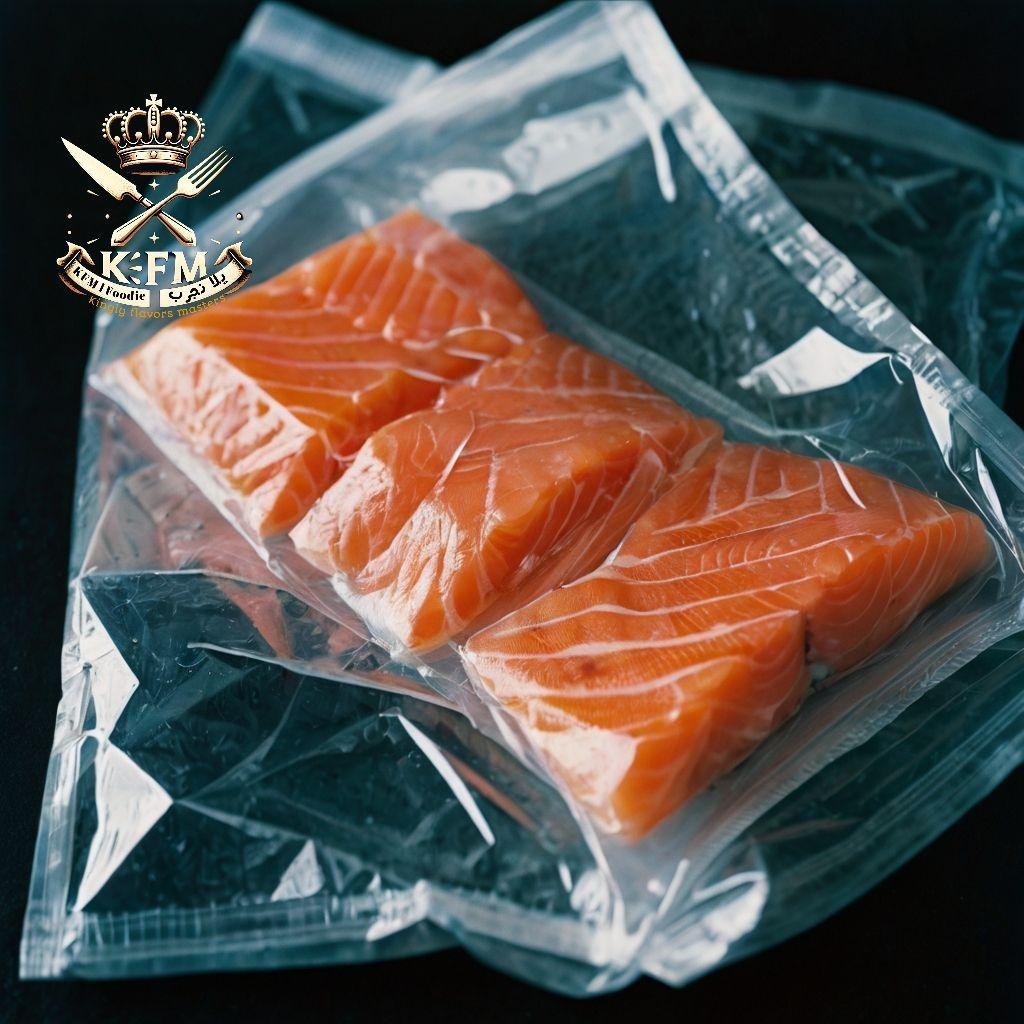
Nutritional Value of Salmon
Salmon is one of the most nutritious foods, combining healthy fats, high-quality proteins, and essential vitamins and minerals that support various bodily functions. Here’s a detailed look at the nutritional value of this unique fish:
1. Omega-3 Fatty Acids
Salmon is rich in Omega-3 fatty acids, which offer numerous health benefits, including:
- Improving heart health by reducing triglyceride levels and bad cholesterol (LDL).
- Enhancing brain function and memory, lowering the risk of dementia and Alzheimer’s disease.
- Reducing chronic inflammation in the body, helping prevent conditions like diabetes and joint diseases.
2. High-Quality Protein
Salmon is an excellent source of protein, essential for building and repairing body tissues. It helps:
- Support muscle growth and strength, making it ideal for athletes and those engaging in strength training.
- Promote satiety for longer periods, aiding in healthy weight management.
3. Essential Vitamins and Minerals
Salmon contains a variety of essential vitamins and minerals that contribute to overall health, such as:
- B-complex vitamins: Aid in energy production and support nervous system function.
- Vitamin D: Boosts bone health and strengthens the immune system.
- Selenium: A powerful antioxidant that protects cells from damage and supports thyroid function.
- Potassium: Helps regulate blood pressure and reduces the risk of strokes.
4. Astaxanthin: A Powerful Antioxidant
Astaxanthin is a natural pigment that gives salmon its pink or orange color and acts as a potent antioxidant with multiple benefits, including:
- Protecting cells from damage caused by free radicals, delaying signs of aging.
- Improving skin health and elasticity, reducing wrinkles, and promoting a natural glow.
- Supporting eye health and preventing age-related macular degeneration.
Conclusion:
Incorporating salmon into your diet regularly is an excellent way to get a rich dose of essential nutrients that enhance heart, brain, bone, and skin health, making it a well-rounded superfood for all age groups.

Uses of Salmon in Recipes and Cooking Methods
1. Uses of Salmon in Cooking
Salmon is one of the most versatile fish in cooking, making it an ideal choice for a variety of dishes worldwide. It can be prepared in multiple ways to achieve different flavors and textures according to preference.
2. Methods of Cooking and Preparing Salmon
A. Grilling
One of the most popular methods that gives a crispy golden crust on the outside while keeping the inside tender.
- Can be marinated with lemon juice, garlic, herbs, or various sauces.
- Best grilled over medium heat to prevent drying out, flipping only once.
- Best for: Those who love smoky and crispy flavors.
B. Baking in the Oven
An easy and healthy method where salmon can be baked alone or with vegetables and spices for a complete meal.
- Wrapping it in parchment paper or aluminum foil helps retain its natural juices and flavors.
- Can be enhanced with butter-lemon sauce or cream for a richer taste.
- Best for: Those who prefer soft and moist textures.
C. Poaching
A healthy cooking method that preserves the nutritional value of salmon by cooking it in lightly salted boiling water or broth.
- Bay leaves, lemon, and garlic can be added for extra flavor.
- Suitable for diets and healthy eating plans.
- Best for: Those looking for a light and easily digestible meal.
D. Smoking
Gives salmon a rich, smoky flavor and is often used in breakfast dishes or appetizers.
- Smoked at a low temperature using walnut, applewood, or cherry wood.
- Can be enjoyed alone or added to salads and sandwiches.
- Best for: Those who appreciate deep and distinctive flavors.
E. Eating Raw (Sushi & Sashimi)
A staple in Japanese cuisine, where salmon is sliced into thin pieces and served with soy sauce and wasabi.
- High-quality, vein-free salmon should be selected to ensure tenderness and optimal flavor.
- Best for: Lovers of Japanese cuisine and fresh flavors.
3. Which Cooking Method Is Best?
The choice depends on personal preference, but in general:
- For rich and bold flavors → Grilling or smoking.
- For health and weight loss → Poaching or baking.
- For pure and fresh taste → Sushi and sashimi.

Tips for Cooking Salmon:
- Use natural seasonings like lemon, garlic, and herbs to enhance the flavor.
- Avoid overcooking to keep it moist and tender.
- Choose fresh or high-quality frozen salmon for the best taste and nutrition.
Salmon Recipes from Around the World
Salmon is used in various global cuisines, prepared in different ways that bring out diverse flavors to suit all tastes. Here are some of the most famous salmon recipes from different culinary traditions:
1. Japanese Cuisine 🇯🇵
- Sushi & Sashimi: Thin slices of raw salmon served with rice or on their own with soy sauce and wasabi.
- Ginger and Soy-Glazed Salmon: A classic Asian dish combining sweet and savory flavors.
2. Scandinavian Cuisine 🇳🇴
- Smoked Salmon: Either cold or hot-smoked, often served with rye bread and cream cheese.
- Butter and Herb Grilled Salmon: A simple yet flavorful dish, served with mashed potatoes and vegetables.
3. Latin Cuisine
- Salmon Ceviche: Raw salmon pieces marinated in lime juice, red onion, and chili peppers.
- Salmon Tacos: Grilled or fried salmon slices wrapped in tortillas with fresh vegetables.
4. Arabic Cuisine
- Salmon with Saffron and Almonds: A luxurious dish with an authentic Arabic touch, served with basmati rice.
- Yogurt-Spiced Salmon: A light and easily digestible recipe, perfect for dinner.
Various Salmon Recipes
- Grilled Salmon with Lemon and Herbs: A healthy and easy-to-make dish.
- Salmon with Cream and Beetroot: A rich and creamy recipe full of flavors.
- Tequila Salmon: A bold Mexican recipe that combines tangy and spicy flavors.
- Smoked Salmon with Vegetable Salad: A light, protein-rich meal.
Best Salmon Recipes
1. Grilled Salmon with Lemon and Garlic
Ingredients:
- 2 salmon fillets
- 2 tablespoons olive oil
- 3 cloves garlic, minced
- Juice of 1 lemon
- 1 teaspoon salt
- ½ teaspoon black pepper
- 1 teaspoon dried thyme
Preparation:
- Preheat the grill to medium heat.
- In a bowl, mix olive oil, garlic, lemon juice, salt, pepper, and thyme.
- Coat the salmon fillets with the mixture and let them marinate for 15 minutes.
- Grill the salmon for 4-5 minutes on each side until fully cooked.
- Serve with lemon slices and grilled vegetables.
2. Grilled Salmon with Honey and Mustard
Ingredients:
- 2 salmon fillets
- 2 tablespoons honey
- 1 tablespoon Dijon mustard
- 1 teaspoon soy sauce
- ½ teaspoon paprika
- ¼ teaspoon black pepper
Preparation:
- Preheat the oven to 200°C (392°F).
- In a bowl, mix honey, mustard, soy sauce, paprika, and black pepper.
- Place the salmon on a baking tray lined with parchment paper and coat it well with the mixture.
- Bake the salmon for 12-15 minutes until fully cooked and golden brown.
- Serve with a side salad or brown rice.
3. Avocado Toast with Smoked Salmon
Ingredients:
- 2 slices of whole wheat toast
- 1 mashed avocado
- 100 grams smoked salmon
- Juice of half a lemon
- Salt and pepper to taste
- A handful of arugula or dill for garnish
Preparation:
- Toast the bread slices until crispy.
- Mix the avocado with lemon juice, salt, and pepper, then spread it on the toast.
- Place smoked salmon slices on top of the avocado.
- Garnish with arugula or dill and serve immediately.

Warning About Salmon Consumption
1. Salmon Allergy
Some people suffer from fish allergies, which can lead to severe allergic reactions such as rashes, itching, swelling, difficulty breathing, or even anaphylaxis.
If any allergy symptoms appear after consuming salmon, stop eating it immediately and consult a doctor.
2. Mercury and Heavy Metal Contamination
Certain types of salmon, especially larger and older ones, contain higher levels of mercury and heavy metals, which may affect nervous system health—particularly in pregnant women, nursing mothers, children, and the elderly.
It is recommended to choose younger salmon and farm-raised varieties from clean environments, such as Atlantic salmon, which are less likely to be contaminated with mercury.
Moderate consumption (two to three times per week) is advised to prevent the accumulation of heavy metals in the body.
3. Interaction with Medications
Salmon may interact with certain medications, especially blood thinners like warfarin, due to its high Omega-3 content, which acts as a natural blood thinner.
If you are taking blood-thinning medications or have bleeding disorders, consult your doctor before incorporating salmon regularly into your diet.
4. Consuming Salmon in Moderation
Despite its many health benefits, excessive consumption of salmon may lead to undesirable effects, such as elevated levels of Vitamin D or Omega-3 in the body, potentially causing blood clotting issues or affecting kidney function.
To maximize the benefits of salmon without risks, it is recommended to consume it as part of a balanced diet that includes a variety of protein sources and other types of fish.
Tip: If you are pregnant, nursing, or elderly, opt for low-mercury salmon, such as Atlantic salmon, and limit intake to twice a week to enjoy its benefits while minimizing the risk of contamination.
Frequently Asked Questions About Salmon
Here are some common questions about salmon, along with detailed answers to help you make the most of this nutritious fish.
What is the difference between fresh and frozen salmon?
Fresh Salmon:
- Has a bright color, a mild, non-pungent smell, and a firm texture.
- Best consumed within 2-3 days of purchase to retain maximum flavor and nutritional value.
Frozen Salmon:
- Frozen immediately after being caught to preserve freshness and nutrients.
- Can be just as good as fresh if frozen and stored correctly.
- Can be kept for up to 6 months, making it a convenient option for those who cannot buy fresh salmon regularly.
Tip: When buying frozen salmon, ensure there are no ice crystals on the surface, as they indicate repeated thawing and refreezing, which can affect quality.
How often should salmon be eaten per week?
Nutritionists recommend eating salmon two to three times per week, with each serving ranging between 100-150 grams, to gain the benefits of Omega-3 and proteins without excessive exposure to mercury.
Additional Info:
Pregnant women and young children should consume salmon in moderation and opt for low-mercury varieties, such as farmed Atlantic salmon.
How can the smell of salmon be reduced while cooking?
Salmon can have a strong smell while cooking, but there are simple tricks to reduce it:
- Soak salmon in milk for 15 minutes before cooking. The milk helps absorb the compounds responsible for the smell.
- Use lemon juice or white vinegar while marinating, as they break down odor-causing compounds.
- Bake or grill instead of frying, as these methods reduce the spread of the smell in your home.
- Ventilate the kitchen well by turning on an exhaust fan or opening windows while cooking.
Is it safe to eat raw salmon?
Yes, but it must be salmon specifically intended for raw consumption, such as those used in sushi and sashimi.
Important Precautions:
- Choose high-quality salmon, preferably frozen at -20°C (-4°F) for at least 7 days to eliminate any parasites.
- Pregnant women, children, and the elderly should avoid raw salmon, as they are more vulnerable to potential health risks.
What is the best way to cook salmon while preserving its nutrients?
To maximize the nutritional benefits of salmon, use cooking methods that retain Omega-3 and essential nutrients, such as:
- Grilling or baking: At a moderate temperature (180-200°C / 356-392°F) to maintain its texture and moisture.
- Poaching or steaming: Without excessive use of fats, ensuring the highest retention of nutrients.
- Pan-searing with healthy oils such as olive or coconut oil, but avoid deep frying to minimize nutrient loss.
Tip: Do not overcook salmon, as it can become dry and lose its flavor and health benefits. The ideal cooking time is 8 to 12 minutes, depending on the thickness of the fillet.














